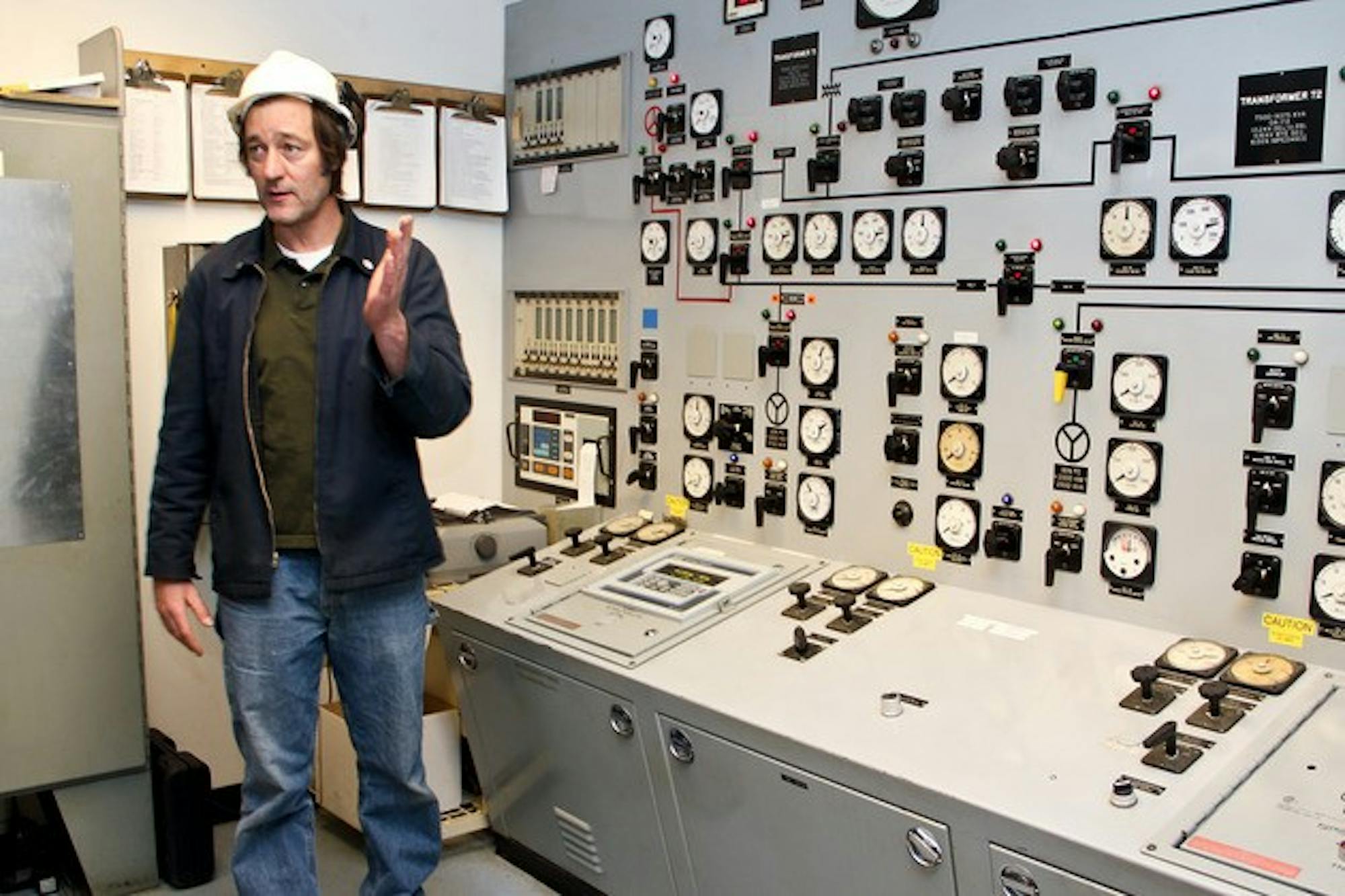"This is the oldest continually-operated cogenerational power plant in the country," chief operating engineer of the plant William Riehl said in an interview with The Dartmouth.
Built in 1898, the plant currently provides steam heat to more than 100 buildings on campus, according to the Facilities Operations and Management website.
Electricity production rates depend on steam demand, which varies from day to day and season to season, Riehl said. Electrical production increases as steam production increases, he said. Although buildings do not require heat in the summer, absorption chillers use steam to cool several College buildings, according to the FO&M website.
The plant constantly responds to changing heat and power needs, Riehl said. On a cold winter day the plant produces 101,000 pounds of steam per hour as well as four megawatts of power for the College, according to Riehl.
"We were making about 98 percent of [the campus'] power this morning," plant operator Terry Blanchard said in an interview with The Dartmouth.
The plant can produce power for about half the price 5.5 cents compared to 10 to 11 cents that the electrical company charges the College per kilowatt, Riehl said. The plant connects directly to the electrical grid to buy power as needed and as a backup in case of a system malfunction, he said, but the power plant meets 40 percent of the College's yearly electrical needs on average.
"We made about half the power the campus was using in January," Riehl said.
In addition to monitoring steam production, plant employees receive fire alerts and regulate heating, ventilation and air conditioning systems across campus, Riehl said. Within the plant control room, operators observe the internal workings of boilers and turbines on multiple computer screens, read reports and watch for trouble from heating, ventilating and air conditioning systems in every building.
As a function of its energy recapturing systems that attempt to avoid wasting heat, the plant will convert one of its boilers that currently runs on fuel oil to burn vegetable oil, Riehl said. Plants engineers investigated many alternatives to burning fossil fuel in the boilers, but some of the options considered including wood, solar and wood dust did not prove economical, according to Riehl.
New energy-efficient buildings and renovations across campus also help reduce energy demands on the power plant, something that may have contributed to the drop in fuel oil consumption from an all-time high of 5.2 million gallons "a few years ago" to 4.5 million gallons in 2010, Riehl said.
In an effort to increase public knowledge of plant operations, Riehl gives approximately 1,000 to 2,000 tours of the plant every year to people like Dartmouth students, local high school groups and Boy Scout troops, Riehl said.
The power plant also serves as a teaching tool, according to Thayer School of Engineering professor Harold Frost, who teaches Intermediate Thermodynamics.
"In that course we visit the power plant and we analyze, roughly, what it's doing in terms of energy," Frost said in an interview with The Dartmouth.
As a dynamic entity, the power plant is updated as frequently as needed, Riehl said. Reliability and efficiency are top priorities when considering replacement products, but the reliability of new apparatuses takes precedence, according to Riehl.
The power plant produces steam in boilers burning Number 6 fuel oil, Riehl said. Trucks deliver this fuel closer to crude oil than the oil used in home heating systems to holding tanks throughout the day, he said. The plant refines the fuel on site, removing impurities, Riehl said.
After refinement, the fuel then gets used in one of the plant's four boilers, where it burns at a variable rate of up to 10 gallons per minute, according to Riehl.
Because the steam leaves the boilers at a pressure higher than that required for heating campus buildings, the power plant uses three turbines to reduce the steam pressure to the necessary 20 pounds per square inch, he said. Attached to a generator, these spinning turbines turn the excess steam pressure into electricity for campus consumption.
Having four different boilers as well as numerous auxiliary and control systems makes for a "very technically-advanced plant," Riehl said. Plant employees, many of whom worked with similar equipment in the military, take pride in the challenge and have fun doing their work, he added with a smile.
"Guys wouldn't get anything out of work if it was too simple," Riehl said.




